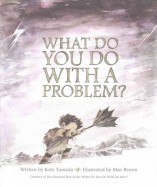| How to Think Like a Scientist: Answering Questions by the Scientific Method Contributor(s): Kramer, Stephen P. (Author), Bond, Felicia (Illustrator) |
|||
 |
ISBN: 0690045654 ISBN-13: 9780690045659 Publisher: HarperCollins
Binding Type: Library Binding - See All Available Formats & Editions Published: March 1987 Annotation: This story uses questions about hypothetical situations to introduce the process of thinking according to scientific method. |
||
| Additional Information |
| BISAC Categories: - Juvenile Nonfiction | Science & Nature - Experiments & Projects - Juvenile Nonfiction | School & Education - Juvenile Nonfiction | Readers - Intermediate |
| Dewey: 502.8 |
| LCCN: 85043604 |
| Age Level: 8-12 |
| Grade Level: 3-7 |
| Lexile Measure: 680(Not Available) |
| Physical Information: 0.42" H x 7.32" W x 9.38" L (0.66 lbs) 48 pages |
| Features: Ikids, Illustrated, Index, Price on Product |
| Accelerated Reader Info |
| Quiz #: 34664 Reading Level: 4.6 Interest Level: Middle Grades Point Value: 1.0 |
| Descriptions, Reviews, Etc. |
| Publisher Description: Every day you answer questions-dozens, even hundreds of them. How do you find the answers to questions? How can you be sure your answers are correct? Scientists use questions to learn about things. Scientists have developed a way of helping make sure they answer questions correctly. It is called the scientific method. The scientific method can help you find answers to many of the questions you are curious about. What kind of food does your dog like best? Is your sister more likely to help you with your homework if you say please? Can throwing a dead snake over a tree branch make it rain? The scientific method can help you answer these questions and many others. Stephen Kramer's invitation to think like a scientist, illustrated by Felicia Bond's humorous and appealing pictures, will receive enthusiastic response from young readers, scientist and nonscientist alike. |
Contributor Bio(s): Kramer, Stephen P.: - Stephen P. Kramer has had a lifelong interest in natural history. After receiving degrees in biology from Pacific Lutheran University and Northern Arizona University, he taught junior high school science for four years on the Navajo Reservation. He spends his time now as a househusband and writer. His first book for children was Getting Oxygen: What do you do if you're cell twenty-two? Mr. Kramer lives with his wife and two sons in Vancouver, Washington.Bond, Felicia: - Felicia Bond is both writer and illustrator of Tumble Bumble, The Day It Rained Hearts, the Poinsettia books, and many others. She painted the art for numerous other award-winning books, including those in the much loved If You Give . . . series and the contemporary classic Big Red Barn. She lived for many years in New York and currently lives in Santa Fe, New Mexico.
|
| Customers who bought this item also bought... |
| Customer ReviewsSubmit your own review |
| To tell a friend about this book, you must Sign In First! |







